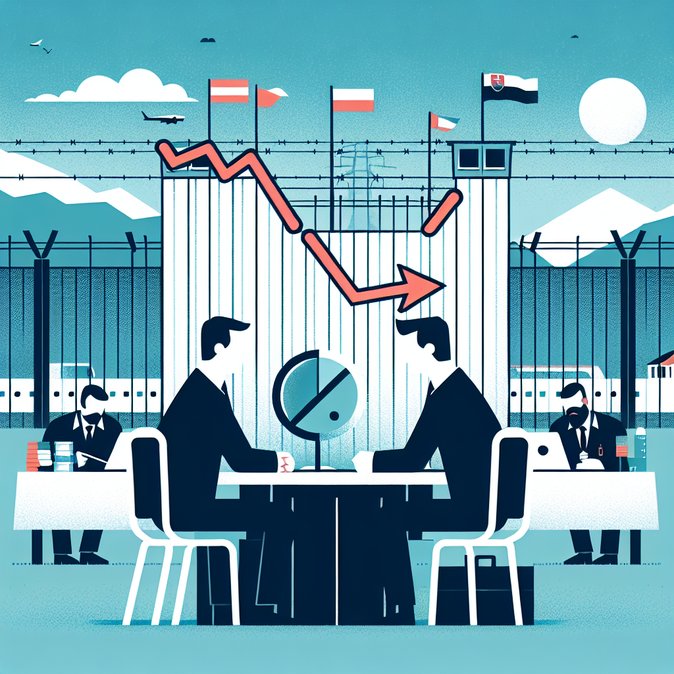
Interior Minister Gerhard Karner met his Slovak counterpart Matúš Šutaj-Eštok at the Kittsee police co-operation centre on 24 November to fine-tune a new tactical concept aimed at pushing irregular migration to ‘near-zero’. The ministers reviewed data showing that apprehensions along Austria’s eastern frontier have collapsed—from almost 15,000 in October 2022 to about 180 in October 2025—after two years of rolling border checks and the Czech-Slovak ‘Operation Fox’ against smuggling gangs.
Key take-aways: Austria will keep temporary controls on the Slovak border at least until 15 December and plans more “controls in depth,” meaning mobile patrols several kilometres inside both countries rather than static checkpoints. A joint task-force will map smuggling routes that have shifted north-east toward the so-called Balkan coastal corridor.
![Austria and Slovakia Agree to Intensify Joint Patrols as New Border-Security Concept Nears Completion]()
Business impact: Commercial freight and commuter traffic should see minimal disruption because most inspections remain intelligence-led. Nevertheless, logistics firms using just-in-time road deliveries between Vienna and Bratislava are advised to budget an extra 15 minutes for possible spot checks until the Christmas peak passes. HR teams moving staff between the capitals should ensure that employees carry proof of legal residence even when travelling within Schengen.
The forthcoming border-security concept—expected in “the next few weeks”—will feed into the government’s 2026 migration strategy and could influence the size of Austria’s labour-migration quotas. Companies relying on posted-worker regimes between Austria and Slovakia should watch for any new documentary requirements that might emerge from the tactical review.
Both ministers stressed that the ultimate goal is to phase out internal Schengen checks once external-border reforms under the EU Migration Pact take full effect in 2026. Until then, Austria will continue quarterly reviews with Slovakia, Czechia and Hungary.
Key take-aways: Austria will keep temporary controls on the Slovak border at least until 15 December and plans more “controls in depth,” meaning mobile patrols several kilometres inside both countries rather than static checkpoints. A joint task-force will map smuggling routes that have shifted north-east toward the so-called Balkan coastal corridor.

Business impact: Commercial freight and commuter traffic should see minimal disruption because most inspections remain intelligence-led. Nevertheless, logistics firms using just-in-time road deliveries between Vienna and Bratislava are advised to budget an extra 15 minutes for possible spot checks until the Christmas peak passes. HR teams moving staff between the capitals should ensure that employees carry proof of legal residence even when travelling within Schengen.
The forthcoming border-security concept—expected in “the next few weeks”—will feed into the government’s 2026 migration strategy and could influence the size of Austria’s labour-migration quotas. Companies relying on posted-worker regimes between Austria and Slovakia should watch for any new documentary requirements that might emerge from the tactical review.
Both ministers stressed that the ultimate goal is to phase out internal Schengen checks once external-border reforms under the EU Migration Pact take full effect in 2026. Until then, Austria will continue quarterly reviews with Slovakia, Czechia and Hungary.







